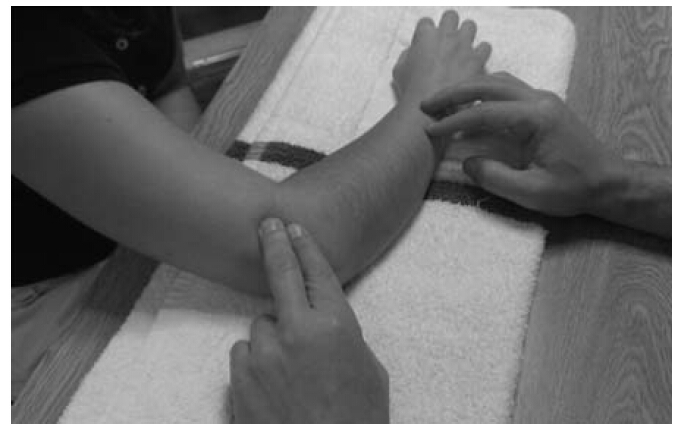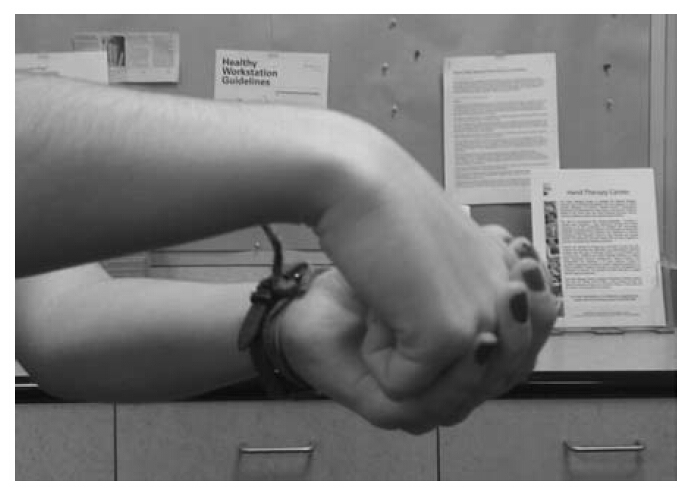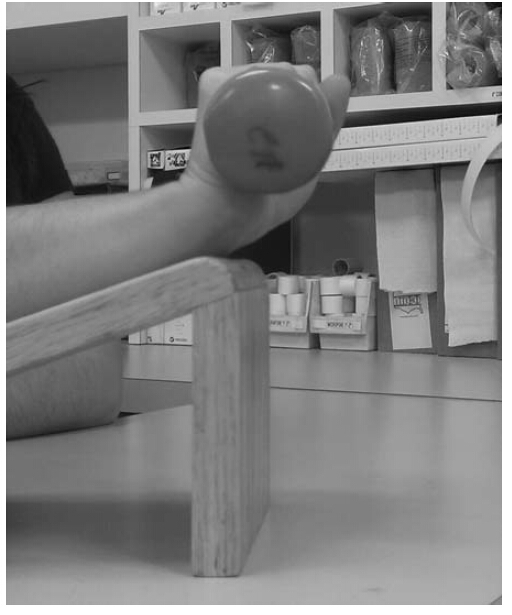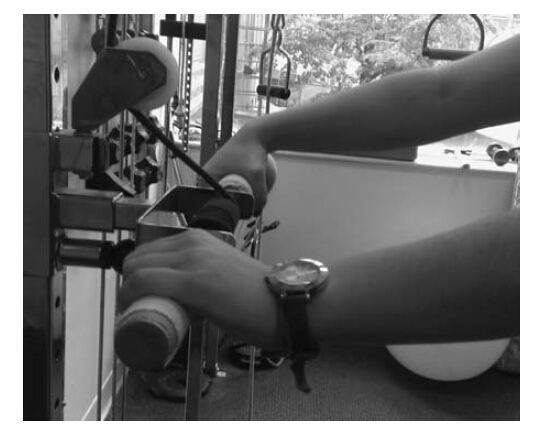Tennis elbow (lateral epicondylitis of humerus) is more common clinically, mainly caused by lateral elbow pain when the patient grasps and lifts objects hard. According to statistics, 10%-50% of tennis players will suffer from lateral epicondylitis of humerus. However, those workers who repeat inappropriate hard activities for a long time can also suffer from lateral epicondylitis of humerus.
Etiology
The most common cause of tennis elbow is tendon injury caused by repeated stretching of forearm extensor muscle, which is especially easy to occur in patients aged 35 to 50. However, young or professional tennis players increase the risk of tennis elbow due to excessive use of elbow joint. At the same time, the lack of resistance of skeletal muscle system is also prone to tennis elbow.
Clinical Manifestations and Physical Examination
The patient complained of lateral elbow pain, which can be radiated to the forearm. The pain can be aggravated when grasping or lifting objects with the affected limb.
Physical examination should include cervical vertebra examination and comprehensive examination of shoulder joint function, including shoulder joint strength test to evaluate whether the contractile ability of each muscle of shoulder joint is balanced.
Then, the function of the extensor wrist muscle of the patient needs to be examined. The flexion/extension strength ratio of the wrist of symptomatic tennis women players is significantly higher than that of asymptomatic women. This imbalance of muscle strength of tennis players is likely to be related to the onset of tennis elbow, while the occurrence of tennis elbow of non-tennis players may also be related to muscle imbalance.
Finally, palpation of the lateral epicondyle of humerus can find tenderness and tenderness in the front of the lateral epicondyle and forearm.
In addition, patients often suffer from a decrease in grip strength due to pain in the lateral epicondyle of humerus, which is a stable and sensitive diagnostic indicator of tennis elbow. Therefore, it is also necessary to measure the grip strength of the affected limb by hand-held grip strength meter.
Neurological considerations
The diagnosis of tennis elbow also needs to consider the symptoms caused by abnormal nerve structure, such as radial nerve entrapment syndrome and posterior interosseous nerve compression, which can cause lateral elbow pain.
In addition, it is necessary to evaluate whether the cervical nerve root is compressed. Local trigger points in the neck or chronic muscle spasms can also cause tennis elbow-like pain.
Conservative treatment
Conservative treatment is divided into three stages, mainly according to acute inflammation, chronic inflammation and muscle strength deficiency. There are many conservative treatment methods, including mainly for the purpose of relieving symptoms and etiological treatment. However, due to individual differences, there is still no unified treatment standard.
The first step is to carry out health education for patients and correct wrong activities. The common conservative treatment methods for tennis elbow include ultrasonic therapy, ultrasonic drug penetration therapy, electrical stimulation, electric ion penetration therapy, hyperthermia and cryotherapy. Manipulation therapy can also be used to treat tennis elbow, such as moving affected limbs or massage (Figure 1).

Figure 1: Massage wrist extensor muscle
In addition, active muscle strength recovery programs such as wrist extensor exercise recovery should be carried out together with the exercise recovery of scapular and rotator cuff muscle groups. Some researchers suggest that tennis elbow can be treated by stretching wrist extensor and forearm muscles. The wrist joint is like being supported, the top is tilted, or stretched with reverse force (Figure 2).

Figure 2: Extending wrist extensor muscle
If nerve root compression is suspected, the compression symptoms can be relieved by moving joints, cervical traction and manipulative therapy.
Tennis elbow can also be treated by injection of non-steroidal anti-inflammatory drugs, cortisone, concentrated platelet plasma, etc.
Sling brace
Sling support mainly treats tennis elbow by reducing the load on wrist extensor during activity.
In the acute stage of tennis elbow, it is necessary to wear a 30-degree splint at the wrist extension position for daily activities, and tennis elbow can also be treated by proximal limb functional exercise. In addition, wearing a reaction force ring brace during exercise is helpful to reduce discomfort.
Functional exercise
Muscle strength and flexibility training can effectively treat tennis elbow, of which centrifugal strength training is considered to be the most effective method.
Centrifugal strength training requires fixing the forearm first, The elbow and wrist joints are in the extended position, Make a clenched fist. The patient lowered the affected wrist joint with the opposite hand. Then lift to the original position again. Repeat 5-15 times for each group, a total of 3 groups, and it is recommended to do it every day. It is normal to have slight discomfort during training. If the pain is severe, stop training immediately. When the patient can easily complete the training, increase the resistance by increasing gravity or rubber band (Figure 3).

Fig. 3: Extensor wrist muscle training
Another method of wrist centrifugal strength training is to tie the weight to the end of the rope. Patients complete centrifugal strength training by controlling the take-off and landing of the weight with the handle, and hold the handle by the healthy arm during the interval of repeated exercise (Figure 4). Most studies have pointed out that 10-15 training times and 6-12 weeks can achieve good curative effects.

Figure 4: Centrifugal Strength Training
In addition, other studies have found that muscle strength training combined with other treatment schemes, such as ultrasound therapy, massage or corrective therapy, can effectively relieve pain and restore limb function.
Surgical treatment
When conservative treatment of tennis elbow fails, the surgical treatment options include incision debridement repair or simple debridement, percutaneous decompression and arthroscopic debridement.
In general, most tennis elbow patients have obvious relief of postoperative symptoms.
Arthroscopic debridement can also achieve the same curative effect for tennis elbow treatment, and can also treat intra-articular lesions at the same time. Another advantage of arthroscopic treatment is that it can return to work in a short time (average 11 days).
Postoperative rehabilitation
A systematic and comprehensive postoperative rehabilitation plan is the key to a good functional recovery, of which an experienced physiotherapist is the most important. Communication between the surgeon and the logistics therapist is very important, because the rehabilitation process needs to consider the surgical method, soft tissue situation and the surgeon’s understanding of rehabilitation.
For patients who wish to resume exercise, they must have no pain during all directions of exercise and have good muscle strength (at least 85% of the healthy limb) indicated by manual muscle strength examination or isokinetic muscle strength test. Grip strength test (at least 85% of the healthy limb) must also be carried out by hand-held dynamometer (at least 85% of the healthy limb).
During the re-exercise phase, it is necessary to gradually hit the floor ball, serve and monitor the amount of exercise according to the patient’s response. At the beginning, the exercise time should be gradually increased every 15-20 minutes, and then the exercise time should be gradually increased according to the patient’s patience, but the exercise is prohibited for two consecutive days.
Conclusion
There are many reasons for lateral epicondylar pain of humerus in tennis elbow. However, there is still no standard treatment plan. Most patients can obtain symptom relief and functional recovery after conservative treatment, and the remaining patients can also obtain good clinical prognosis after surgical treatment. In short, more research is needed to prove the most suitable exercise method and amount as well as the treatment method of tennis elbow.
